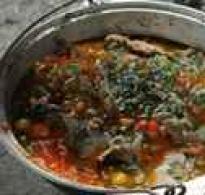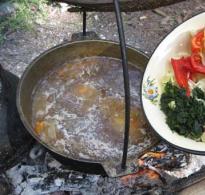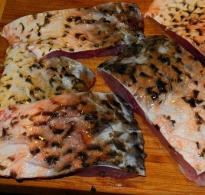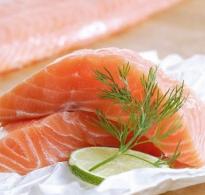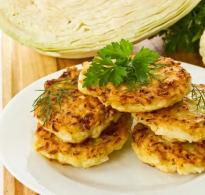Stuffed fish in Jewish way. Gefilte fish - stuffed fish in Hebrew Fish in Hebrew name
Gefilte fish, hotish?
Shabbat Shalom, Haverim!
Oddly enough, but I'm not a big fan of Ashkenazi cuisine. Sweet tsimes are not for me. But I respect well-cooked stuffed chicken neck, forshmak, “Jewish penicillin” (chicken broth) with matzo, and gefilte fish, including as excellent snacks with vodka.
Stuffed fish, like many dishes of the Jews of the Pale of Settlement, is a dish of poverty, when a whole family needs to be fed with one piece of meat or a limited amount of fish. The Jews in the townships tried to make dinner from the "spread out five", in the words of Sholem Aleichem. Gefilte fish, in addition, is a beautiful, festive dish, which, subject to kosrut, in contrast to meat, goes well with dairy. Such fish is used by religious Jews as a dish for the Sabbath meal. For on Saturday one cannot work, and even the extraction of non-food from food is considered work, that is, in this context, if a whole fish were fried, then the bones would have to be removed from it while eating. This is a violation, you can only extract food from non-food, for example, gnaw a large bone with small pieces of meat.
As a favorite iconic dish in every cuisine in the world, this dish has many variations. Here regional features come into force, the types of fish that are available in a given area, and any housewife has her own version and considers it the most correct.
I present to you the version that her grandmother taught my wife from the series "as for myself" ...
In this version, the fish is not laid out entirely on the dish, but is made "cutlets".
So!
I went to the Pryvoz in the fish row. Usually, for this recipe, my wife's grandmother used carp mixed with silver carp, somehow you can't always buy a good pike in our area, but it's still more used for whole stuffing.
Comrades advised carp and I, just in case, having asked about its availability, received an affirmative answer.
The fish was alive, did not smell of mud and, at my request, was cleaned and butchered. The head was cut off, the ridge with the tail was cut out, the carcass was milled. The fish was small, 1800 gr., Just for 1-2 days, so that you don't get tired of eating the same thing for a week. It was decided to make the dish only from it.
I came home, laid out the sources.
A fish, one carrot, 5 bulbs, one more was needed further, 2 eggs, white bun nicknamed "Odessa bagel", milk.
We cut the fish into pieces of 8 mm.

Cut the onion into cubes and start stewing in a cauldron for vegetable oil... First over medium heat, then over medium heat, covered.

Separate the skin from the meat with a sharp knife, trying to leave it intact.
In the photo below: in the left pile of skins, in the middle is the pulp, on the right is the head, a tail with a ridge, bones and fins.
The head should not have eyes, gills, and a bone is also removed, which gives bitterness. Google it and find it.

We pass the pulp through a meat grinder.

Stir the onions all the time. We open the lid, increase the heat and achieve a golden color, while the onion is rather not fried, but stewed.

Let the onion cool.
Soak the bun in a little milk.
We pass the fish through the meat grinder again (so that the mince is more tender and get rid of the bones that may remain), adding half of the fried onions without oil, a raw onion, a bun. Add 2 eggs, salt and pepper.

We knead the minced meat with our hands thoroughly.

We lay out the skins with the remnants of the fish with the inside side up.

From minced meat, hands soaked in cold water, we sculpt cutlets of the appropriate size and stick with the skin.

Fry our cutlets until crusty. First from the skinless side, and only then on the stronger “skinned” side.

We spread our blanks on a dish to cool down.

In a large saucepan, put the head and the ridge on the bottom of the bone, on top of the carrots, cut into nickels, the remnants of fried onions, along with fat.

Further ... Further, such a trick that you just need to accept a priori, if you want to do this recipe.
Probably, if I, doing it intuitively, would first pour water and cook the bones with vegetables, and only then lay the cutlets, but according to this recipe, our fried semi-finished products are laid on top of raw ingredients and poured with purified cold water so that it slightly covers everything. Everything is salted, peppery.
Some put beet rings and onion peels under the bottom.

It is brought to a boil, covered with a lid, the heat is reduced, and it is left to gurgle slowly.
Open in an hour, add sweet laurel and pepper same. Straighten with salt and pepper.

We leave it for another hour.
It would seem that the fish is ready in 20 minutes, and we languish it for 2 hours, but here it has its own logic (Jewish) and its own taste (the same).

For all birthdays in our family, stuffed fish takes an honorable place on the table. Everyone loves it, and therefore there are always helpers in cooking. Those who have never stuffed fish, do not be alarmed, it is not as difficult as you think. Today I will share with you all the secrets of tender, juicy, aromatic stuffed carp, pitted. I am grateful for the recipe to my neighbor Mina Abramovna, who cooked it according to her own proprietary recipe, passed down from generation to generation, of course, with some changes.
To cook carp stuffed in Jewish way, we need carp - preferably more than 1 kilogram.
First of all, we clean off the scales, remove the eyes and gills. Then we cut off the head - from the side of the abdomen, but not completely. When the knife touches the spine, we take it out, and raise our head up with a sharp movement, breaking the spine. We cannot separate the head from the body.

We begin to remove the skin with a "stocking". With a small knife with a sharp end, slightly cut the skin above the meat, make a small hole so that half of your finger can fit in it. We insert our finger into the hole and with gentle movements begin to separate the skin from the meat. The movements of the finger are reminiscent of the movements of a "janitor" cleaning the windows of a car. This is how we separate the skin from both sides.

Separating the skin, turn it inside out.

In those places where there are fins or bones, we insert scissors inside and cut them off. We continue to remove the skin, turning it inside out to the tail - the lower the better. Then - by cutting the spine, leaving the skin with a tail.

As a result, we have separate skin with head and tail and fish meat on the bone. We wash them.

Now we will separate the meat from the bone. To do this, we will make a longitudinal section along the carcass. Then, with a sharp knife, separate the meat from the spine and costal large bones.

So, we have skin, meat and bones. We need everything.

And now - a trick that will give the fish a unique taste. We will cook onion jam. Cut it into half rings, add water, vegetable oil and 2 small pinches of baking soda. Bring to a simmer and simmer over low heat until thick and apple-jam-colored. It is advisable to cook onions in advance.

Grind the cracker in a blender bowl as fine as possible.

Put the fish, yolk in the blender bowl (we have three of them, we cooked 3 fish) and punch the fish very well. If you grind through a meat grinder, then skip 2-3 times. There are many small bones in carp, they need to be chopped well.

Add onion jam to the fish.

Also add the ground cracker and season with salt and pepper. Punch well again in the blender.

We put the minced meat in a bowl and add the protein whipped to the peaks, which will give the minced airiness. Mix thoroughly with gentle folding movements, like a biscuit.

We make a vegetable pillow under the fish - cut the onions and carrots into rings and put them under the carp. On the sides we lay out the ridge with costal bones. Cover with gauze.

Fill the carp carp with minced meat, not very tight so that the fish does not burst during heat treatment.

We spread the carp on cheesecloth in a baking sheet, fill it with warm, slightly salted water up to half the height of the fish, cover with foil. We send it to the stove, bring it to a boil, reduce the gas. The water should barely boil. Cooking time is one and a half hours. It is advisable to cool the fish in a baking sheet.

Transfer the finished chilled fish to a dish. I usually take a thin sharp knife, cut it into portions and only then start decorating. But you can not chop at this stage, but chop already at the time of serving.

We decorate at our discretion.

We usually decorate carp stuffed in a Jewish way with mayonnaise, lemon, tomatoes, cranberries. Every time we try to change the design.


Ideally, this dish is done like this. The fish must be cut into portioned pieces (thoroughly cleaned beforehand, but not gutted). The giblets are removed when you cut the fish. Each piece turns out to be whole, i.e. there will be no incision in the abdomen. Fillet should be cut from each piece, leaving only the skin. I made it easier.

I took a ready-made silver carp fillet with skin. I chose bones, separated the fillet from the skin, which I cut into small "ribbons".

The fillet was ground twice through a meat grinder with one large onion, a bun soaked in water. Added black pepper (to taste), salt and sugar. In general, this is a spicy dish. If done according to the rules, then you need to pepper well.

Also put 2 tablespoons in the minced meat. vegetable oil and pour in gradually, stirring well all the time, a quarter of a glass of water.

Make meatballs from minced meat. By the way, you can not wrap it in a skin at all, but calmly cook only meatballs. This will not change the taste. Put each meatball on a skin tape and wrap it in it.

Lay out the bottom of the non-stick cookware with onions, cut into rings, onion peels, carrots and beets in circles.

Put meatballs on top.

Pour cold water along the side of the pan (so as not to wash the minced meat) with water so that it is slightly higher than the fish. If you haven't refilled it right away, it's not scary. Anyway, after an hour, water (1 glass) must be added.

They put it on medium heat, let it boil, and then reduced the heat and cook for 2-2.5 hours on low heat (it should languish). Salt, pepper, add sugar. Be sure to try it. This dish needs, as they say, to bring to taste. Rather, broth.

Put the bay leaf 10 minutes before the end of cooking. Well, it's done. Let it cool down. Put it on a dish and fill it with strained broth. We put it in the refrigerator. The broth hardens and you get a fish in jelly.

That's all, Gefilte-Fish is ready! Enjoy your meal!
A story about cooking gefilte fish. It would seem, well, what is there - fish itself and fish stuffed, but you never know what? I foresee the screams and groans in the comments, I foresee the offended and slammed the door, as in reality I see people writing: "But at our house it was not prepared at all like that."
There are few Jews, but there are many gefilte fish recipes. There are many recipes, there are even more connoisseurs, and there is nowhere to taste well-cooked fish - no one wants to mess around. But everywhere they say: "Oh, leave me alone, I still have to stuff fish today!"

Our love story for stuffed fish began a long time ago, when we were young. But I want to start the story with the events that happened in our family not so long ago, not even fifteen years have passed.
Things were going very badly for me that year. Business is not going on and that's it. Sometimes, to distract myself from sad thoughts, I called my elder friend, the father of my late friend, Mikhail Natanovich, who lived alone in a large, empty house.
- Mikhail Natanovich, what do you have for lunch? Well, then I am for "kerosene" and to you!
We jokingly called vodka kerosene. Mikhail Natanovich, despite his lonely life, cooked hot every day and believed that this was the guarantee of his health. We ate, drank deliciously, turned on the tape recorder with songs of the time when his house was full and there was not enough room for dancing, and remembered the past, or simply were silent and sighed about today.
- Well, Stalik, are you upset about money? Here, rub the palm of one hand with the thumb of the other. Rub it well! Look, what has rolled up there? Not rolled, no pellets? And sometimes it rolls down, right? This is what rolls down - the money is! Today nothing rolled on your hand, you won't be upset about it, right?
- But how? After all, home, family, children. Dress, teach, feed. And here - even if you crack - I fight like a fish on ice, but nothing goes.
- Wait, - Mikhail Natanovich interrupted me. - Do you have an anniversary this year? Is it forty years old? Here, arrange such a holiday for everyone to gasp. Call the whole city! Call everyone so that everyone can see - you are doing well! And then we'll see.

I have arranged to rent a hall in a newly built restaurant, where clients have not yet found their way. I promised them:
- Such people will come who will then come to you every day! And I'll cook myself. So let's cook that everyone will think "this is a restaurant!"
And he began to buy food. Believe it or not, I had only $ 600, but we invited and fed 120 people to the core. I can't list all the menus and tell in detail how you can get out of the situation even with such little money, so I will only tell you about the nail of that evening - gefilte fish stuffed with fish.
First of all, I went to Syr Darya and bought 22 fish there. Among them there was just one - pike, silver carp, carp, grass carp and snake-head. In a word, everything that is found in this river, if only the fish were larger.

Traditionally, pike is considered the most suitable fish for gefilte fish. This is due, first of all, to the fact that the pike itself is a rather dry fish and rarely tastes good if you cook it as it is. Therefore, it is from pike that cutlets and gefilte fish are most often prepared.

The second reason for choosing pike is that it is easier to skin pike than other fish species. If the pike has not yet been gutted, then you just need to cut the skin at the head and the entire skin will be removed entirely, in a stocking.

Unfortunately for the pike, its caviar has recently been popular, so they catch it more and more for the sake of caviar, and the carcass itself is sold cheaper than the rest of the fish. But, alas, already ripped through the stomach. Well, nothing, you can cook it like that - just skin it.

Removing the skin from a carp is a little more difficult. But there is a trick - take two napkins, hold the slippery skin of the carp with one hand, and the flesh with the other. Where the meat remains on the skin, carefully trim with a knife.

Cut at the base of the tail, cut off at the base of the head.

Remove the gills from the head, rinse everything inside thoroughly.

Remove meat from the ridge, do not pay attention to small bones.

Send the ridges, ribs, heads to cook, pouring a small amount of water.

I forgot to tell you that you need a little more fish than you are going to serve. For example, if you want to cook two stuffed fish, buy three fish at once. Of those that I bought for my 40th birthday, my wife prepared 12 for the table - the largest and most beautiful. And all the little thing went in addition to the minced meat.

In general, in addition to the minced fish itself, in the gefilt fish there are onions fried in vegetable oil (do not spare the oil!) And white rolls soaked in milk.

For example, this time we got a kilogram of five minced meat twice passed through a meat grinder, so we put six rolls, and the onion was probably about a kilogram, if we count it raw.

A large spoonful of sugar was used for this amount of minced meat.

A couple of tablespoons of fine salt.

And a full, on top, spoonful of black pepper.

The minced meat must be properly kneaded and knocked out, in the same way as the minced meat on the kebab.

For more smoothness, you can add half a glass of cold water to the minced meat.

And this stuffing should be stuffed with fish skin and head. You don't need to sew up anything, everything will be fine!

I thought this time: stuffed fish is good for everyone, but it lacks some kind of zest!
And I came up with this. In Azerbaijan, they prepare lavangi fish, that is, stuffed fish. Only there, the skin is not removed from the fish, but minced meat is prepared from soaked plum marshmallows (lavashan), nuts, and fried onions. At first there was an idea to add all these components to the minced fish and thereby decorate its taste. But then another idea came to mind, a better one.
We rolled minced meat for lyavangi into sausage, wrapped it in cling film and chilled it, almost frozen it.

Then this sausage was inserted into the belly of one of the fish and covered with another minced meat.

Here - as if there is nothing. Cover, smooth the skin!

A baking sheet is greased with oil and onions are laid out in thick rings and carrots.

The fish is laid on top.

It would be nice to grease the fish with oil before baking.


I inserted a thermometer needle into one of the fish and set the oven temperature to 140C with a humidity of 50%. If you don't have humidity control in your oven, place a hot skillet underneath and pour boiling water into it. And that's all - close and bake. Focus on the beautiful color of the skin, but I warn you that the fish should cook for quite a long time, an hour and a half or two, if not more.

Oh, yes, I know that many do not bake fish, but cook gefilte fish in a latka, in the same oven! And I am ready, ready to please both ours and yours, as long as there is no war. That's why we needed broth! Do you understand me? Has it reached you now?

Only first I poured pomegranate juice into the patch, and put carrots and beets under the fish.

And he poured enough broth into the patch so that the fish was waist-deep.
That's it, this patch can be kept in the oven for at least five hours, just don't heat the oven too much. Take out that baked fish, as it will be ready, and let this one still stand! The longer it stays in the oven, the tastier it will be!

Of course, in determining the readiness of the fish, one must focus not only on the color of the skin on the outside, but also on the temperature and consistency of the minced meat inside. In fact, the minced meat should reach a temperature of 65C in the very middle of the fish and harden, lose its plasticity.

You can serve the fish warm or cold. I love carrots, which served as a substrate for the fish and serve the fish with it. Olives are very appropriate for such a fish, and salted lemon is just super!

Let cool the fish that was stewed in its own broth and pomegranate juice, remove from the patch and cut into washers.

Decorate it with the beets and carrots that served as a substrate, and warm the sauce a little and pour them over the dish already ready to serve.
Well, now, it remains only to tell how the matter ended. In general, as you start a year or a decade, you will spend it. After that birthday, my business went uphill, I worked from four in the morning and fell into bed at ten in the evening, every day drove several hundred kilometers, did not disdain any earnings, and in the summer I began to build a big new house. It is true that it will turn out to be big, beautiful and expensive, I learned in a couple of years - closer to the finish of the construction.
I don't even know what influenced the then changes for the better in my life - my work or the taste of our stuffed fish. We had been preparing fish for fifteen years already, learned from books, and gained experience, stuffing cones. Well, by the time I was forty, I finally learned how to work.
Most likely, they were influenced by good teachers, like the aforementioned old man who strengthens health with pilaf, lamb fat, vodka, barbell and love for women and dancing.
In general, good luck to you guys. Don't put your hands down. And if it seems that there is absolutely nowhere to attach them - prepare gefilte fish and invite guests. Most importantly, do not sit idle and everything will be fine.
© STALIC
Old Haim dies
On the bed behind the wall.
Suddenly from the kitchen flies
A wonderful unearthly smell.
They smell wonderful (just flour!)
Latkes, kugel and forshmak,
Stuffed pike,
Sweet tsimes and lekah.
Chaim Mordukhaya asks:
“Run to grandma, kid!
Let me dear Sarochka
Give a piece of fish fish ... "
Appearing on the doorstep
The granddaughter reported that
What boba told him:
"This fish is for later!"
(Folk art)
There was not a drop of Jewish blood in my grandmother's veins ... In any case, the opposite fact has not been documented anywhere, I know this for sure: in the troubled times preceding the final collapse of the Union, some research in our maternal lineage, my mother and I honestly produced - it did not work out! Azohen wei! To be both me and my children goyim until the end of days ... Gevalt! And yet ... A native of the Zhytomyr region, who was born and raised among the closest neighbors - Jews, the grandmother from childhood absorbed all the charm of the small-town flavor, knew and respected the customs and traditions of the Jewish people, until the end of her life she retained a peculiar, lingering-melodious dialect and imagery expressions ("have you already made a bazaar?") with a lot of Hebrew words and, of course, was a great connoisseur and connoisseur of Jewish cuisine! It is to her that my mother and I owe recipes for such wonderful dishes as traditional forshmak delicious yuh (both the first and the second in one pan), the most tender sweet and sour roast with prunes , wonderful "Raw" eggplant caviar (it is also called "caviar from blue in Odessa!), festive stuffed neck , honey sweet tsimes and, of course, unforgettable gefilte fish - classic stuffed fish in Jewish style. I would like to tell you about the latter, especially since everyone has probably heard about this dish, and it has been honored with repeated mentions both in folklore and in fiction!
I don’t know which aidishe kopf (to the Jewish head - this is pronounced with great respect!) The first thought came to cook stuffed fish in this way, but this man was truly worthy of a monument during his lifetime! I'll make a reservation right away: there are a huge number of recipes (or rather, variations on the theme) for preparing this festive dish, in fact, like Ukrainian borscht, each housewife has a subtly different taste, and at the same time each one will swear to you that it is her recipe that is “the most most"! Yes, this, perhaps, is not so important: cooking is a creative process, and we all bring something of our own, personal to it. I also do not know for certain which of the grandmother's neighbors it was recorded - it could have been Aunt Betya, and Aunt Fira or Sofa ... Perhaps my grandmother once mentioned this, but the name of the "author" Unfortunately, it has not survived in my memory! Therefore, we will assume that it is simple gefilte fish in Zhytomyr …
Let's start with fish ... Granny categorically insisted on pike, but at the same time clarified that it is much tastier to mix the meat of two (or more) types of fish: pike with its sweetish meat, nevertheless, in her opinion, is somewhat dry, “in a couple “It would be nice to take a fatter fish with it, but at the same time it is imperative to remember that skinning (the most time-consuming and difficult process!) From some fish species without damaging it is very problematic! Therefore, today a carp (ordinary, not mirror!), Similar in weight to our pike - about 1 kg, will act as a "duet" with a pike.
Required products: 
Pike about 1 kg
- carp about 1 kg
- onions 1 kg
- carrots - 4-5 medium pieces.
- beets - 3-4 medium pieces. + 1 small (for juice)
- parsley - 1 root
- celery - 1 piece of root
- eggs - 3-4 pcs.
- white stale bread or loaf (crumb) - 1/4 loaf
- milk (for soaking bread)
- bay leaves - 2-3 pcs.
- black peppercorns - 6-8 pcs.
- salt, ground black pepper - to taste
- citric acid (on the tip of a knife) or apple cider vinegar (1 tsp)
- lemon, parsley (for decoration).
There are also a lot of ways to remove this skin from fish. Someone, carefully cutting it round at the level of the upper fins, removes it with a "stocking", someone - by making an incision from the side of the abdomen, there are options with a cut along the dorsal fin, and even - having cut immediately into portioned pieces, remove the skin separately from each ! I, like my grandmother, do not like it when minced meat comes into contact with water during the cooking of fish (grandmother in this case contemptuously scoffed: “You can only cook fish fish in pieces schimazl (crazy), so I take off the skin either with a "stocking" (it's so good to "handle" the pike, then I sew the head back!), or by making an incision in the abdomen - that's how I'm going to gut the carp.
So, first - the pike. "Trick" from grandmother No. 1: to make the skin easier to remove from it, the fish should first be slightly beaten off with a wooden mallet! True, now very few people can find this item in the kitchen, so an ordinary wooden rolling pin is also quite suitable. We wrap the fish in cellophane and evenly tap on it with a rolling pin on all sides. Unfortunately, this time I got the fish already cleaned and gutted, with a cut along the abdomen, so I will have to skin it using this method! We trim the pelvic fins along the incision and begin slowly and carefully (when you need a hurry - you yourself know!) To separate the skin from the meat (if necessary - use scissors and a thin, sharp knife - "frog"). Having reached the dorsal fin, turn the fish over and do the same procedure on the other side. Now we cut the ridge at the tail and head with scissors and carefully cut the dorsal fin from the inside (very carefully so as not to pierce, otherwise it will be full drek (literally - cheap, nonsense!). It turns out a skin with a tail and head and a fish carcass. The pike's head should be completely cleaned, leaving one "shell". We take up the carp: we repeat the entire sequence of operations and get another skin ready for stuffing with a head and tail and a fish carcass.
Now we are preparing the minced meat. We carefully free the meat from the bones, first pulling out the ridge, then the small bones, and together with the onion (one large onion is enough) and pre-soaked in milk or water (grandmother preferred milk!), Roll the white bread through a meat grinder (three times!). Now add the eggs, salt and pepper to taste. The resulting minced meat must be thoroughly "knocked out" - in the process of mixing, the minced meat is thrown with force on the table, cutting board or simply into a bowl - then the fish will be much softer! If the minced meat is very tight, you need to add a little water or milk, in which the bread was soaked.
Fill the fish skin and head with minced meat. Do not stuff very tightly - during cooking, the minced meat will swell and the skin may burst! Sew up the incision on the belly. The classic requires to lay out on the bottom of the pan, where the fish and fish bones will be cooked. Grandma did a little bit differently - "trick" number 2: fish bones, fins and scales (yes, although she psul - inedible, but gives an excellent gelling effect!) she placed it in a gauze bag, the "tail" of which was tied to the handle of the pan - at the right time it will be easy to remove it along with all the contents! Lining the bottom of the pan with washed onion skins,
We put half of the peeled and thinly sliced carrots, onions, roots and beets,
We put our fish on the vegetables and cover with the rest of the vegetables on top.
There should be a lot of vegetables in general, in a ratio (by weight) with fish almost 1: 1. Pour water into a saucepan so that the contents are covered, add salt, bay leaves and peppercorns and set on fire. After the fish has boiled, remove the foam, reduce the gas to a minimum and cook for about 2 hours.
Onion skins give the broth a very beautiful brownish-golden color, we could have left it that way ... But we are making a festive dish! "Chip" from grandmother No. 3: at the very end of cooking, add a few crystals of citric acid (or a little apple cider vinegar) to the broth and pour in freshly squeezed beet juice (grandmother grated the beets on a fine grater and squeezed through cheesecloth), boil for literally 5 minutes and turn off - the broth will have a luxurious ruby color!
The finished fish must be allowed to cool in the broth in which it was cooked - if you take it out hot, it will turn out to be dry! We take out the fish from a slightly warm broth, take out the threads and fins, cut into portions, spread it in a fan on a deep dish along with the heads and tails (put some of the vegetables with which the fish was cooked on the bottom), fill it with strained broth and put in the refrigerator for solidification.
This is how it looks in finished form! From myself I can say: this dish can become a decoration of any, the most exquisite table, it is eaten instantly, while the delight of the guests and compliments to the hostess are guaranteed for the whole evening ... So it's worth tinkering!
I ask you to additionally evaluate my efforts: the fact is that I practically do not eat fish - in my distant childhood I had severe poisoning after a treat in the form of a sandwich with red caviar and strawberries with sour cream for dessert (I have an allergy to strawberries + fish-milk combination for me completely unacceptable) ... With pleasure I can eat only those fish products that do not have a pronounced "fishy" smell - sprats, for example, tuna, smoked fish. But crayfish, shrimps, mussels and squids can be eaten in unlimited quantities. So that's it!

Lahaim (for life!) and - bon appetit!

